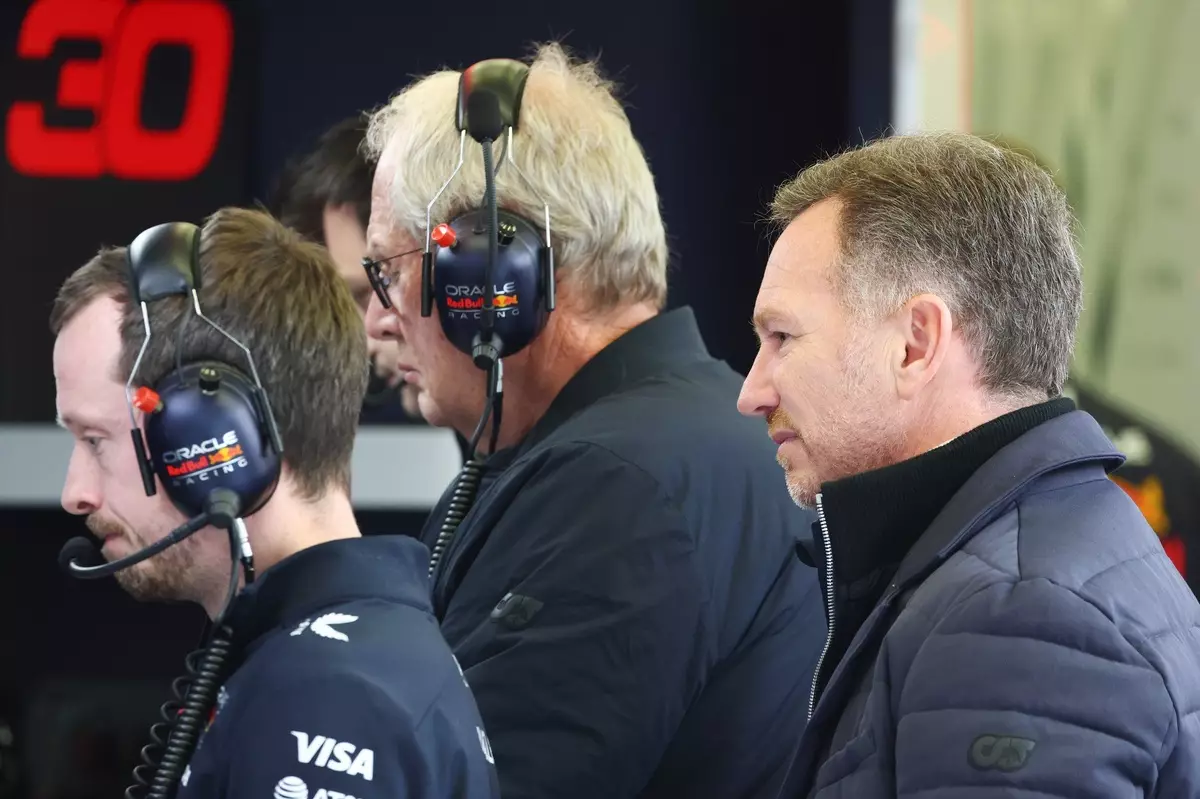In the high-octane world of Formula 1, no team has been scrutinized as closely as Red Bull Racing in recent times. Once the quintessential symbol of dominance under Max Verstappen, the team finds itself wrestling with a series of technical disappointments. Christian Horner, the ever-astute team principal, recently expressed a palpable frustration—a sentiment that resonates deeply amidst the apparent disconnect between their wind tunnel data and on-track performance. Although Verstappen managed to secure a win at the Japanese Grand Prix, the broader implications of Red Bull’s struggles raise questions about the team’s long-term trajectory.
This contrast of victories on race day against underlying technical dilemmas paints a picture of a champion facing unprecedented turmoil. In a sport where precision engineering and data interpretation dictate success, the stakes are high, and the margins are razor-thin. Yet, as Red Bull heads into 2025—the final year of existing regulations—the prevailing sense of uncertainty looms large. The lack of a cohesive correlation between simulated data and real-world performance reveals possible pitfalls that could endanger not just their immediate success but also their future competitiveness.
Dissecting the Disconnect: Data-Driven Design Challenges
Horner’s assertion that he is “looking at two different watches” encapsulates the frustration of any racing team grappling with significant performance gaps. The mechanics of racing today hinge on the fundamental principle of data correlation—pinpointing precise aerodynamic characteristics through wind tunnel testing that directly translate to the racetrack. Unfortunately, Red Bull’s tech outfit appears to be facing a classic case of misalignment in this regard.
While teams like Haas and Mercedes have seemingly turned the tide in their favor, Red Bull’s ongoing struggles with the RB21 force a reevaluation of their approach to technical advancements. Notably, Horner’s comments about the wind tunnel’s failures indicate that while their tools are state-of-the-art, an intangible quality—the engineering finesse—has not translated well into competitive advantage. This underscores a significant danger: as rival teams innovate and evolve, Red Bull could find itself caught in a quagmire of outdated methods, resulting in poor performance and missed opportunities.
The ramifications extend beyond mere racing results; they signify a potential erosion of Verstappen’s confidence behind the wheel. As his team grapples with car setups that fail to meet his expectations, the psychological pressure mounts. A driver renowned for his aggression and precision suddenly finds himself hamstrung, forced to adapt to a vehicle that reacts unpredictably during critical phases of the race.
Piecing Together Resilience: The Road Ahead
Despite the challenges, Horner maintains an optimistic viewpoint, insisting that the team has identified the technical problems. However, the critical juncture lies in addressing these issues effectively. The parameters governing F1 design are strict, and the very nature of the current regulatory environment prevents major redesigns. The team is, in effect, tasked with unravelling the complexities of the existing framework while trying to drive performance insights from their accumulating track data.
The timing of the introduction of their new wind tunnel facility in 2027 offers a glimpse of hope, yet it remains a formidable wait in F1 terms. New structures and methodologies in this sport often require an evolutionary leap rather than a revolutionary overhaul. As such, Red Bull must diligently mine every shred of data and output their current tools provide, identifying nuances that might have previously evaded their grasp. Success hinges on their technical team’s ability to enhance mid-corner grip, which is paramount to restoring Verstappen’s confidence and performance upon entry into corners.
Horner points to a potential resolution through relentless refinement—adapting to the insights gathered as they race in Australia, China, Japan, and Bahrain. Ultimately, harnessing this critical data while focusing on iterative improvements will dictate whether Red Bull can reclaim its position at the pinnacle of Formula 1.
Beyond Analytics: The Intangible Aspects of Racing
In many ways, the plight of Red Bull serves as an eye-opener about the broader landscape of Formula 1. Success is seldom born from isolation; rather, it evolves from teamwork, shared vision, and a relentless pursuit of excellence. While data analytics form the backbone of engineering decisions, it is the collaborative spirit of the team that often proves the decisive factor in overcoming adversity.
The mechanics of racing are deeply intertwined with human intuition, creativity, and confidence—a trifecta that can sometimes be lost amid an over-reliance on technology. Red Bull’s stakeholders must marry technological advancements with the human element, ensuring not only that their data is actionable but that it resonates with the drivers’ needs and instincts. Ultimately, the journey taken by Red Bull Racing is one of resilience, innovation, and the enduring quest for performance, reflecting the very essence of Formula 1—a sport that thrives on pushing boundaries, both mechanically and psychologically.

